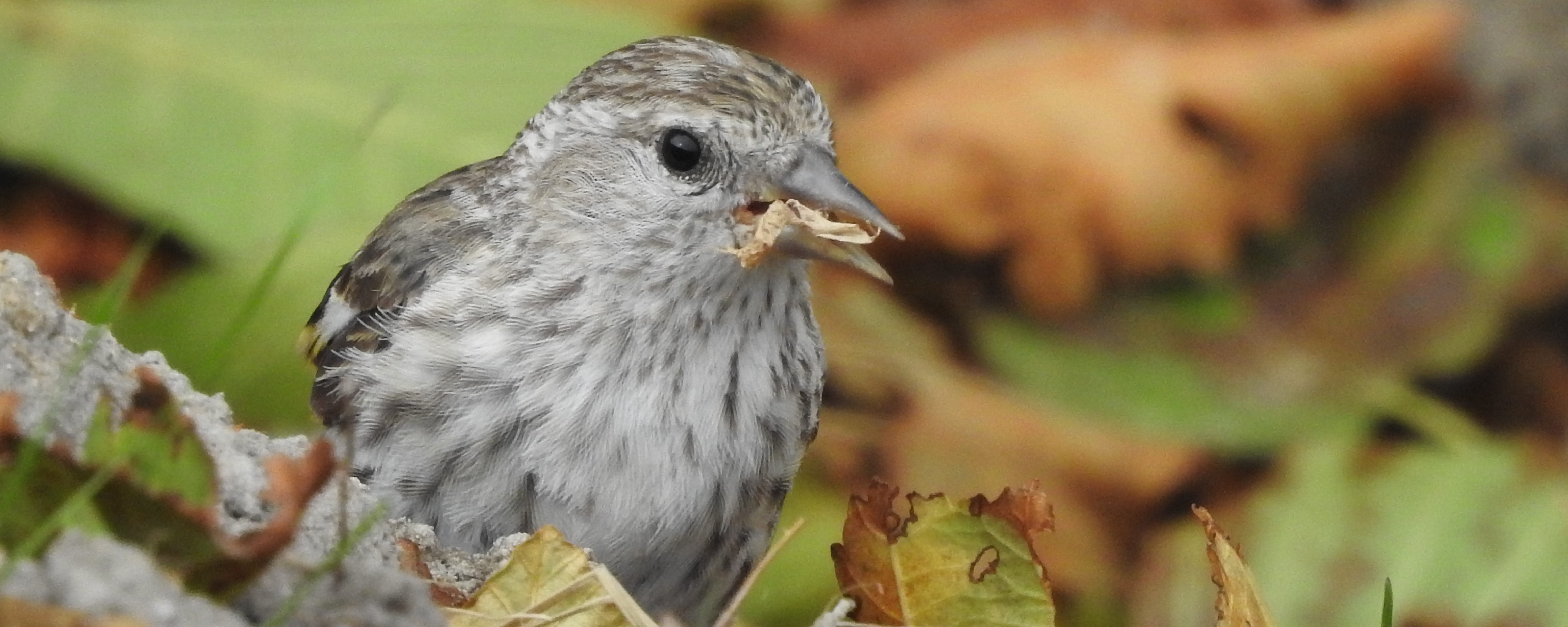
New Habitat, New Birds
As Prickly Pear Land Trust's restoration project along Sevenmile Creek continues, the bird habitat increases.
Guest column by Shane Sater
A mid-October day finds me along the new stream channel at Sevenmile Creek under a crisp blue sky. The sun has melted the season’s first snowfall and the willows still glow with golden leaves. Most of the summer birds – yellow warblers and meadowlarks, darting bank swallows and thicket-dwelling gray catbirds – have left. The air is quiet except for the occasional caws of crows, and on this day I am not looking for birds, but identifying plants. Most of the grasses are dry and straw-colored, and seeds are everywhere: the parachute tufts of giant goldenrod and rabbitbrush, the minuscule coffee-colored grains of knotted rush. The puddle where Wilson’s snipes and killdeer foraged in September is gone, but smooth brome has responded to the moisture with lush leaves and a late bout of flowering.
I glance up from my botanical key and see a small hawk – no, a merlin falcon – gliding low, then landing on a woody stub near the restored stream channel. I grab my camera and zoom in for photos hoping she or he won’t fly off yet. I see these swift, alert hunters often in Helena during the winter, but this is the first time I’ve seen one perching at Sevenmile Creek. A few minutes later, the merlin drops out of sight down by the stream. Is she hunting? Bathing? I wait intently. A magpie lands nearby, calls harshly, and flies off. More minutes pass. I decide the merlin must have moved on, so I inch closer. Then she flies up, spreading her wings and tail to balance on the twig of a newly planted willow. Twenty yards away, I slowly, slowly reach for my camera.
There is something magical about finding new birds here. This fall I saw American pipits foraging for the first time in the bare earth of the restored stream section, and wood ducks and solitary sandpipers on the four-month-old ponds. Besides these newcomers, the ponds have drawn many others: warblers, sparrows, robins, finches. Once I watched a flock of pine siskins feeding among fallen alder leaves near the water. Another time I saw a secretive northern waterthrush reflected in the still water, dabbing the surface with its sharp bill. As the habitat changes, the birds respond. Fall is waning, and the hardy birds of winter are appearing. October 16 brought the first American tree sparrows, fresh arrivals from Alaska or northern Canada. Winter will cover the ponds with ice, the earth with snow, and the landscape with quiet. Underneath, seeds will be waiting: cattails, spikerushes, alders, and willows. As spring arrives and the habitat continues to grow, I will be waiting too: eagerly anticipating new life on this landscape.
The new stream channel of Sevenmile Creek that will raise the creek out of its incised channel and up on the the bench where it historically flowed before being channelized in the 40s. Sevenmile Creek looking South
Photo by Shane Sater
Recent “Firsts” at Sevenmile Creek
- 7/16/2018: Singing Grasshopper Sparrows in the moist field
- 7/16/2018: New Bank Swallow colony in eroding streambank
- 7/16/2018: First Bullock’s Oriole nest documented
- 7/16/2018: Singing Clay-colored Sparrows in the east section
- 8/25/2018: Migrating Solitary Sandpipers foraging at the ponds
- 9/1/2018: Wood Ducks on the new ponds
- 10/15/2018: First sighting of a Merlin perching and hunting
- 10/16/2018: Palm Warbler foraging along the creek
- 10/16/2018: Hermit Thrush feeding with a group of robins in a chokecherry thicket
- 10/16/2018: Three Harris’s Sparrows in the shrubs with four other species of sparrows
Want to learn more? Find photos, sound recordings, and more at eBird, or contact Shane Sater, [email protected]. Bird surveys at Sevenmile Creek are a project of Last Chance Audubon Society, in collaboration with Prickly Pear Land Trust.
As a reminder, restoration work is ongoing at the Sevenmile Creek property, so the site will remain closed to the general public.







